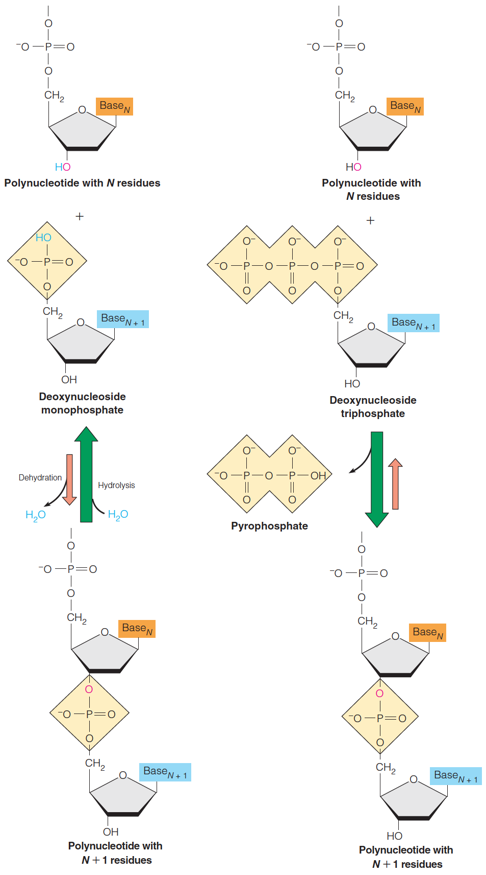 |
| Previous Image | Next Image |
| Description: How polynucleotides are actually formed. Each monomer is presented as an NTP to be added to the chain. Cleavage of the NTP provides the free energy that makes the reaction thermodynamically favorable. The enzymes catalyzing such reactions are called polymerases. Two important features of all polynucleotides: A polynucleotide chain has a sense or directionality. The phosphodiester linkage between monomer units is between the carbon of one monomer and the carbon of the next. Thus, the two ends of a linear polynucleotide chain are distinguishable. One end normally carries an unreacted phosphate, the other end an unreacted hydroxyl group. A polynucleotide chain has individuality, determined by the sequence of its bases—that is, the nucleotide sequence. This sequence is called the primary structure of that particular nucleic acid. Picture Stats: Views: 422 Filesize: 112.32kB Height: 875 Width: 486 Source: https://biology-forums.com/index.php?action=gallery;sa=view;id=33871 |
